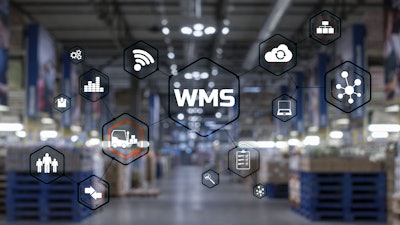
You’re Due for an Upgrade
Legacy fulfillment operations were built on a strong warehouse management system (WMS) to route orders, create pick lists, update fulfillment statuses – all of the day-to-day operations required for fulfilling and shipping orders. But today’s commerce landscape is far more complex, and fast-growing brands need more than just process management. They need business intelligence, automated decision-making, and predictive analytics. The WMS that most fulfillment operations were built on is outdated to say the least. So, if you’re looking to build a more resilient and efficient supply chain, you won’t get it done with a legacy WMS – just like you wouldn’t be able to catch up on emails with your old flip phone.
The Future of Fulfillment Technology
Most successful brands are selling across multiple channels that have diverse fulfillment requirements. And consumer expectations around order fulfillment have never been higher. Consumers have long expected fast delivery, but today they increasingly expect more personalized delivery options including scheduled delivery times, in-store pickup, and sustainable shipping. And don’t forget that they want to track their delivery with real-time updates from any device.
One of the primary functions required to meet these evolving demands is advanced order orchestration. This goes beyond simple order logic, which asks what warehouse is in stock and closest to the customer. Those two inputs simply do not enable the type of decision-making required by today’s complex ecommerce ecosystem.
Advanced order orchestration also takes into account overall order velocity at each warehouse location, weather events, how close the order drops to the same-day fulfillment cut-off time, whether the warehouse has a backlog of orders, and more. Order orchestration looks at the broader network to evenly distribute workload, ensuring warehouses aren’t scrambling to pack orders before the carrier pickup time.
So, while ReportLinker reports that the WMS industry is expected to grow to a $51.3M industry by 2030, WMS technology as we know it, does not have the capabilities today’s brands need to manage their complex supply chains and meet consumer expectations. As we navigate unruly market conditions, it has become clear that traditional WMS solutions need to make way for more intelligent and resilient systems that give a full end-to-end view.
Further, if the volatility in the supply chain of the past few years has taught us anything, it’s that businesses need anticipatory systems in place to act as a windscreen, protecting them from inevitable disruptions. Traditional WMS serve as a rearview mirror at best, compiling and reporting on what’s already happened. The next evolution of supply chain technology is a forward-looking, flexible, and intelligent solution that enhances and informs processes rather than just facilitating them.
Omnichannel Fulfillment Technology
According to a recent merchant survey, 38% of decision makers face challenges with their warehouse and logistics management. Logistics management has become more time-consuming and expensive between volatile warehouse and freight industries and an unpredictable labor market. As we all watch to see how consumer demand will change, businesses are working hard to balance consumer expectations against efficiency and profitability.
What’s more, today’s consumers are less loyal to brands and sales channels. In fact, 89% of consumers report that they comparison shop across two or more marketplaces before making a purchase decision. Successful merchants need a multichannel – even omnichannel – presence to stay top of mind for their best customers.
In an omnichannel environment, brands must manage inventory across multiple fulfillment centers and brick-and-mortar store locations. They have to weigh the cost of a lost sales opportunity due to a stockout against the cost of re-allocating inventory or shipping from an alternate facility. They have to weigh the cost of sacrificing margin to acquire new customers and know when and where to expose their inventory to balance sales velocity with profitability.
Another consideration is sales channel hierarchy. Not all channels are created equal – in terms of margin or consumer expectations. On a channel like Amazon Seller Fulfilled Prime (SFP), for example, sellers face incredibly high standards for same-day and on-time fulfillment. If they don’t meet those expectations, Amazon won’t hesitate to shut down their account. Those sellers need a WMS that will prioritize SFP orders to ensure compliance at all costs.
A Smarter Approach to Fulfillment Technology
Finally, most businesses are managing a complex tech stack. Often, integrating these existing technologies with a traditional WMS is a painstaking and expensive process. A modern fulfillment software, on the other hand, must be flexible with an open API to integrate easily into any tech stack. Today’s supply chain must be digitally connected end-to-end to enable smarter insights to decrease time in transit (TNT) across the supply chain, improve customer service levels, and inform procurement and replenishment strategies.
When used correctly, supply chain data can even be used to drive demand from the bottom up. Fulfillment data holds the key to consumer buying patterns: when they purchase, where they’re purchasing from, and what they purchase. And these insights go all the way down to the SKU level. Harnessing the power of this data can help brands optimize their product catalog and inventory distribution strategy to increase margin and improve service levels.
Ultimately, by trading in that old flip phone, your brand will be taking ownership of your supply chain – driving results from the bottom up, seizing new opportunities, and building flexible resilience into your operations. The new look for fulfillment technology is forward-thinking resilience and intelligent insights.



















